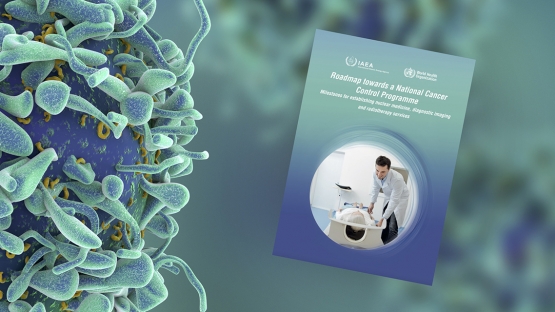Navigating the growing burden of cancer and providing quality care is a challenge for governments worldwide. A new roadmap has been developed by the IAEA and the World Health Organization (WHO) to help countries design national cancer control programmes and will provide guidance on available tools and resources for implementing services related to cancer prevention, diagnosis, treatment, as well as palliative care, with particular focus on diagnostic imaging, nuclear medicine and radiotherapy.
“The incidence of cancer continues to grow, and this represents a significant global challenge that can only be addressed by working together,” said May Abdel-Wahab, Director of the IAEA Division of Human Health. “Significant resources are needed to support these global efforts. A guiding document or roadmap can assist policymakers in understanding the universal elements of cancer control and where to seek support for these different elements.”
The number of new cancer cases worldwide is expected to increase by approximately 35% to 24.5 million in 2030, according to the 2018 estimates by the International Association of Cancer Registries.
This roadmap, which is available in print and online, can help authorities set up a strategy for cancer control and understand where to start, what needs to be in place and from which organizations to seek additional help or information.
“Achievement of each step is based on a set of prerequisites. This document will indicate some milestones of these critical steps in the progress toward a comprehensive cancer control plan,” said Cherian Varghese, Coordinator for the Management of Noncommunicable Diseases at WHO.
Along with guiding countries through each step of the process, the roadmap document also covers questions that might otherwise be overlooked, such as nuclear safety and legal considerations.
“Many countries are embarking on efforts to establish new cancer centers or radiation oncology centers, and the IAEA can provide support throughout the process, including on the proper legal infrastructure and regulatory bodies,” Abdel-Wahab explained. “Having a document that provides this information as well as an overview of the necessary components for cancer control, supports policymakers in understanding the required elements.”
As a joint effort, the Roadmap draws on expertise from both the IAEA and the WHO. Bringing together the knowledge and services of both organizations provides countries with a well-rounded approach to cancer care planning, Varghese said. “The IAEA’s nuclear- and radiation-related expertise combined with the guidance WHO provided in developing a ‘roadmap’ with ‘milestones’ will act as a blueprint for effective programmes on the ground.”
The IAEA and the WHO plan to continue expanding and updating cancer control resources to reflect the latest developments and the growing support by each organization. The organizations are preparing an in-depth publication that details the how to set up cancer centers.




